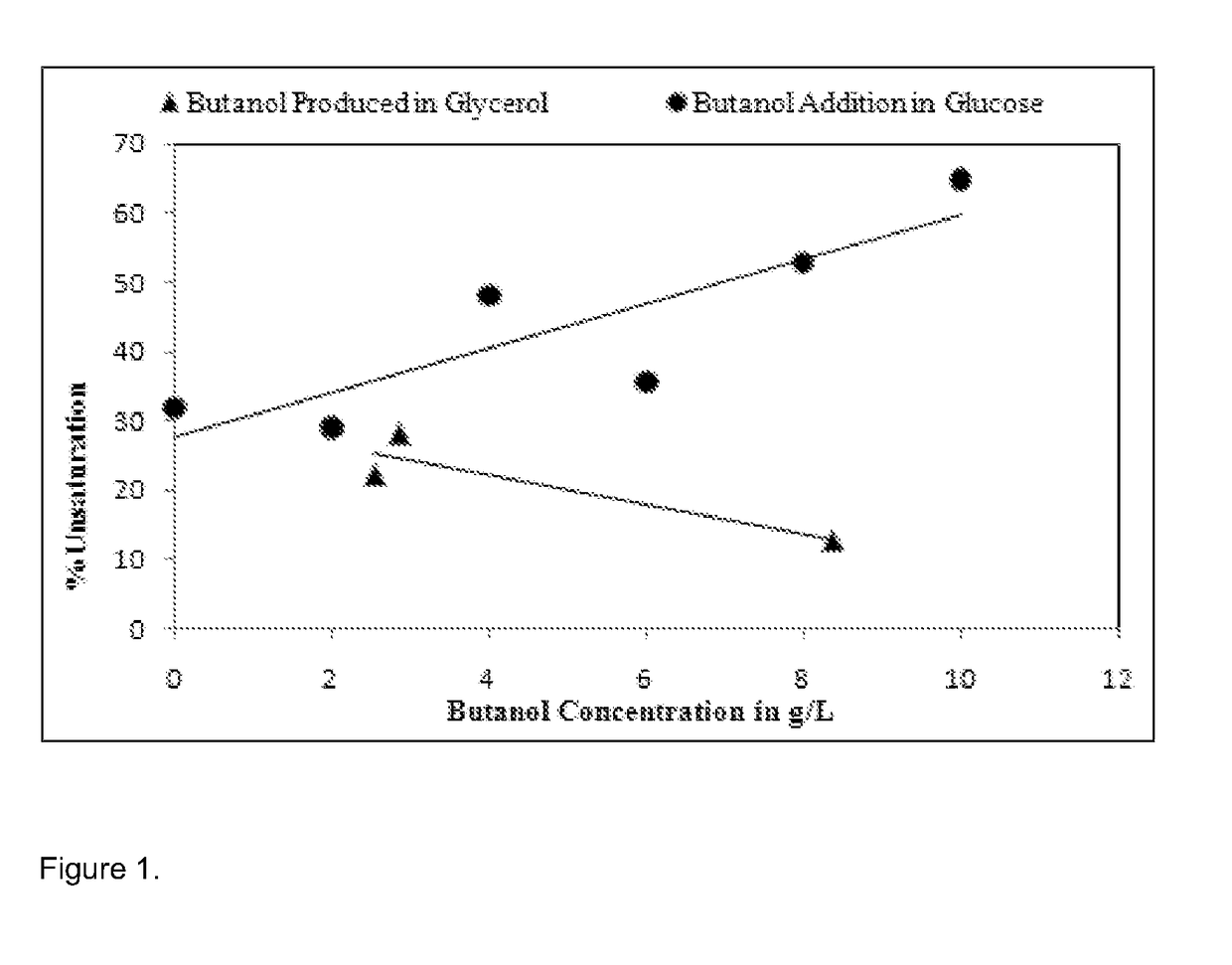Methods of facilitating the bioconversion of crude biodiesel-derived glycerol by microorganisms
a technology of crude biodiesel and biodiesel, which is applied in the field of facilitating the bioconversion of crude biodiesel-derived glycerol by microorganisms, can solve the problems of low economic value, very limited usability of crude glycerol generated during biodiesel production, and dramatic alteration of the cost and availability of glycerol
- Summary
- Abstract
- Description
- Claims
- Application Information
AI Technical Summary
Problems solved by technology
Method used
Image
Examples
example 1
Butanol Production and Effect of Impurities
Experimental
Materials
[0029]Biodiesel-derived crude glycerol was obtained from the Green River Biodiesel, Moundville, Ala. All chemicals were purchased from either Fischer Scientific or Sigma-Aldrich, unless mentioned otherwise. Fatty acids such as sodium stearate, sodium oleate and sodium linoleate were obtained from TCl America.
[0030]Bacterial Strain, Media and Fermentation
[0031]Clostridium pasteurianum ATCC 6013 was obtained from American Type Culture Collection (Manassas, Va.). Freeze dried pure cultures of C. pasteurianum were revived using nutrient rich reinforced clostridal growth media (RCM) and glycerol stock cultures were prepared for future use. The RCM media was obtained from Becton, Dickenson and Company. Pre-culture for glycerol utilization experiments were grown in RCM. The growth was monitored using optical density and the cultures were used as inoculum once they reached mid-exponential phase of growth. The growth experiments...
example 2
Supplementation with a Secondary Carbon Source
Experimental
Materials and Methods
[0050]Clostridium pasteurianum ATCC™ 6013 was obtained from American Type Culture Collection (Manassas, Va.). Freeze dried pure cultures of C. pasteurianum were revived using nutrient-rich reinforced clostridial growth media (RCM) and glycerol stock cultures were prepared as above.
[0051]Pre-cultures for glycerol utilization experiments were grown in RCM. The growth was monitored using optical density (λ=600 nm) and the cultures were used as inoculum once they reached the mid-exponential phase of growth. 100 mL of Biebl medium with appropriate carbon sources was inoculated with 10% inoculum and the contents were split equally into three in a 75 mL culture flask. All experiments were carried out in batch cultures and in triplicates. The cultures were monitored for growth, substrate utilization and product formation as mentioned earlier.
[0052]The co-fermentation of sugars was studied using hexose (dextrose) ...
PUM
| Property | Measurement | Unit |
|---|---|---|
| w/w | aaaaa | aaaaa |
| concentrations | aaaaa | aaaaa |
| pH | aaaaa | aaaaa |
Abstract
Description
Claims
Application Information
 Login to View More
Login to View More - R&D
- Intellectual Property
- Life Sciences
- Materials
- Tech Scout
- Unparalleled Data Quality
- Higher Quality Content
- 60% Fewer Hallucinations
Browse by: Latest US Patents, China's latest patents, Technical Efficacy Thesaurus, Application Domain, Technology Topic, Popular Technical Reports.
© 2025 PatSnap. All rights reserved.Legal|Privacy policy|Modern Slavery Act Transparency Statement|Sitemap|About US| Contact US: help@patsnap.com



